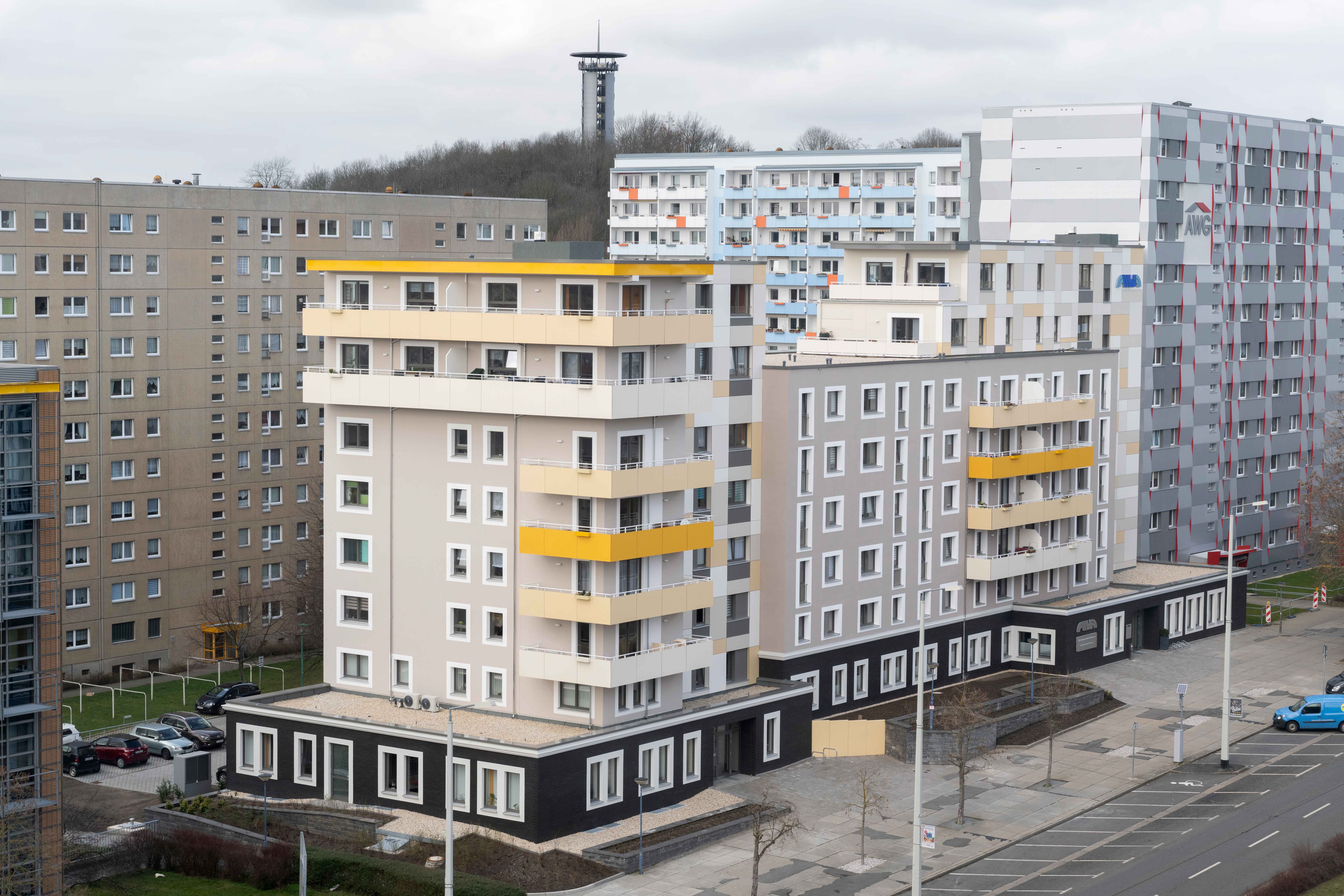The residential area on Tischendorfer Strasse in downtown Plauen was not one of the most popular in the past: prefabricated buildings dominated the scene; they were the last of their kind to be built in the city on the edge of the Vogtland region during the German Democratic Republic (GDR) era . The apartments were no longer in demand by tenants, even though living space in this central location of Plauen is actually in high demand. The Plauen housing association was faced with a decision: Demolish or renovate? It decided to preserve the old prefabricated buildings and began a comprehensive renovation, including the addition of two floors.
This had two positive effects. Additional living space was created in a desirable downtown location without having to seal off new areas. And the cityscape also benefits: The monotonous appearance of the prefabricated building was enhanced by the increase in height, and the redesigned block now blends harmoniously into its architectural surroundings. The tenants like it; suddenly there is a renewed interest and demand for living in a prefabricated building.
Larger apartments and additional floors
Before the construction, the complex consisted of one-, two- and three-bedroom apartments with kitchens and bathrooms, no balconies and no elevators. This no longer met the needs of today's tenants. Therefore, the floor plans of the former 76 apartments were fundamentally changed, and the units were gutted. The result was 36 more spacious apartments with bright bathrooms and kitchens, balconies and an elevator. The apartments are now barrier-free and wheelchair accessible. The loss of living space was at least partially offset by the addition of two floors. These two new floors now form the heart of the complex: they have been equipped with particularly large living rooms and roof terraces, from where the view over Plauen towards the Vogtland region is impressive.
